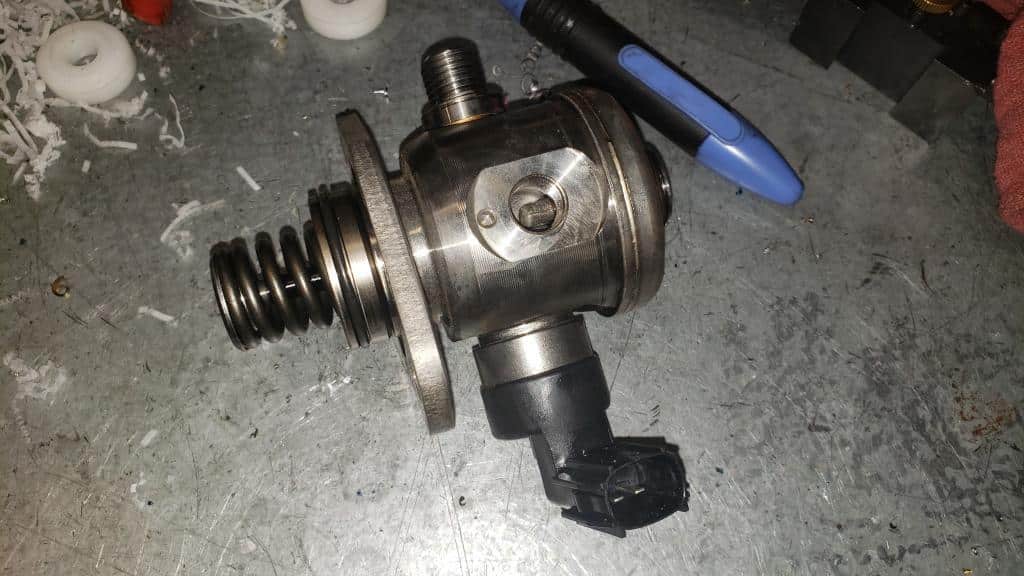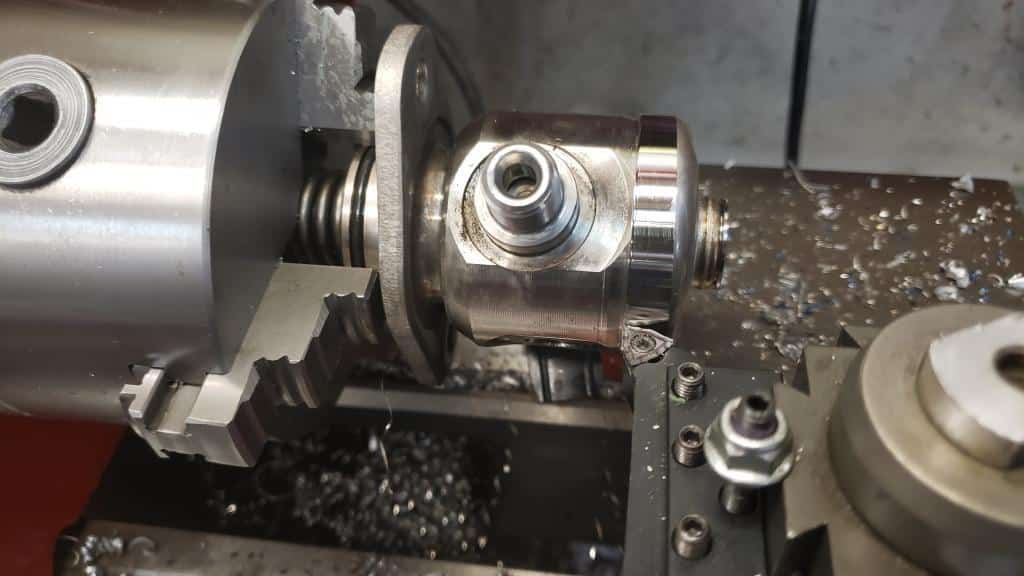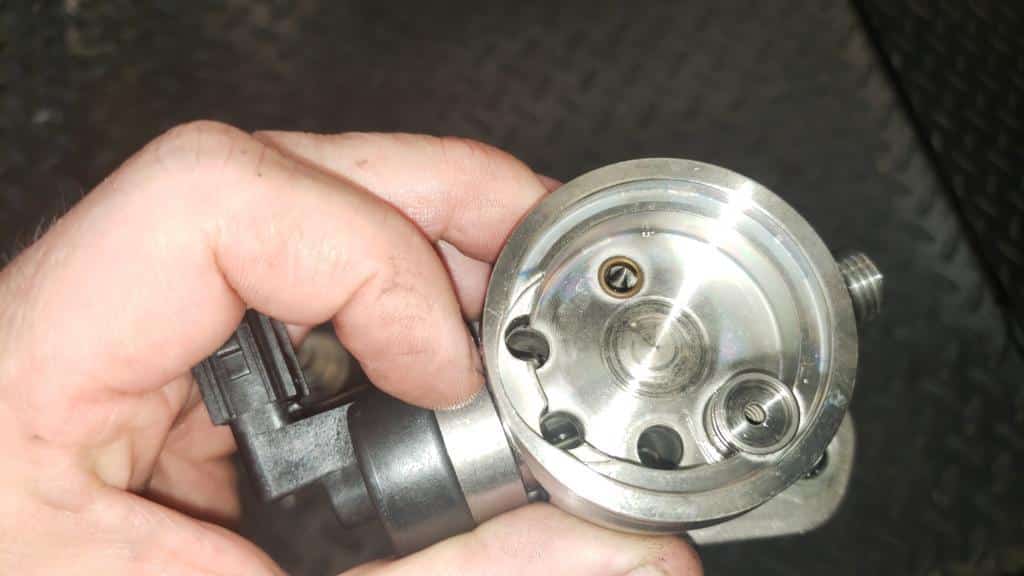A common problem
Honda’s “Earth Dreams” high-pressure Direct injection fuel pumps are failing. I’ve heard this from dealer techs, but up until yesterday I hadn’t seen one come into our shop since most of these D.I. cars are still under warranty. Since I was curious about how the pump worked, I went ahead and disassembled it to take a look.
2015 Honda Fit cranks but won’t start
This particular pump came from a 2015 Honda Fit that rolled into the shop with extended cranking and extremely low power. The check engine light was on and it had set a P0087 (Fuel rail pressure too low). The ECM monitors the fuel rail pressure using a pressure transducer. Fuel pressure in live data is 29 PSI. This is what the in-tank pump generates, so the high-pressure pump was doing nothing at all.
What’s inside a direct injection pump?
Well, this pump certainly wasn’t meant to be disassembled. It’s pretty beefy and appears to be made of stainless steel. I’m certainly not going to be able to pry it open with a screwdriver.

The top of the direct injection pump is welded to the top body, so I mounted into the lathe and cut through the top and weld joint.

From left to right: piston, pushrod, and spring, cylinder, pump body with pressure control valve, damper, pump top.

The bottom of pump contains a piston, pushrod, and spring. The spring retainer is held to the pushrod with shrink fit collar, so there’s no easy way to remove the spring to access the allen (not visible in the picture). Since this isn’t going back into a car, a pipe wrench did the trick.

This is the top of the pump body with the damper removed. There’s an inlet screen in the top. What I first assumed is a pressure relief valve, but later discovered is a one way check valve responsible for maintaining fuel pressure in the rail when the pump isn’t pumping. A passage to the piston on the bottom. And two passages to the pressure regulator valve on the left.

I assumed that the failure was the pressure regulator, since the piston and cylinder sleeve still seemed to have a nice fit, and the cam lobe and pusher were in good shape with 3mm of lift.
I’m just as dumb as when I started
In the end I wasn’t able to figure out how this pump works just by looking at it. Obviously there’s a piston that creates the pressure, but how is the pressure maintained? There’s only one check valve. It has a pressure regulator, but how does it regulate pressure? There are two passages that appear to be either opened or closed, but simultaneously. As far as I could tell, this pump shouldn’t work.
When all else fails, cheat
If all else fails, read the manual. Today any question can be answered in seconds by asking your phone. It takes the fun out of wondering and experimenting sometimes, but it’s nice to be able to flip to the back of the book and find the answer when you’re done struggling.
I found this video which does a great job of explaining how the pump works succinctly. (Credit to ADPTraining / Automotive Diagnostics and Publishing). The pump is both more simple and more complex than I realized. The pump itself is very simple. However, by itself it’s not a pump. Without computer control of the pressure regulator, it will not build any pressure. The complex part is the computer control.
The ECM opens and closes the pressure regulator in time with the position of the 4 lobe cam on the cam shaft. During the piston down stroke the valve is open, allowing the cylinder to fill with fuel. When the piston starts to come up the the ECM closes the valve so the piston can develop pressure which is pushed past the check valve into the fuel rail. Pressure can be controlled changing the time when the valve closes. The closer to BDC the valve closes the higher the pressure. If the valve is closed later into the upstroke the pressure can be reduced.
When does the injector squirt?
Since this is a 4 cylinder engine, and direct injection pump cam is on the camshaft, the D.I. pump piston makes one stroke per firing event. I imagine peak pressure is developed about the time the of the injection event.
To be honest I’m not sure when the injection event takes place. Fuel is injected directly into the combustion chamber. It doesn’t require the intake air flow to carry the fuel in. This would make it possible to change the D.I. injector timing from traditional port fuel injector timing. Maybe that will be my next experiment. I’ll set up a 4 channel scope to check the crank position, cam position, and injector firing pulse.
Other articles you may like:
Fuel injector cleaning
Prius catalytic converter hack
TIG welding a cracked cylinder head
Plastic Welding